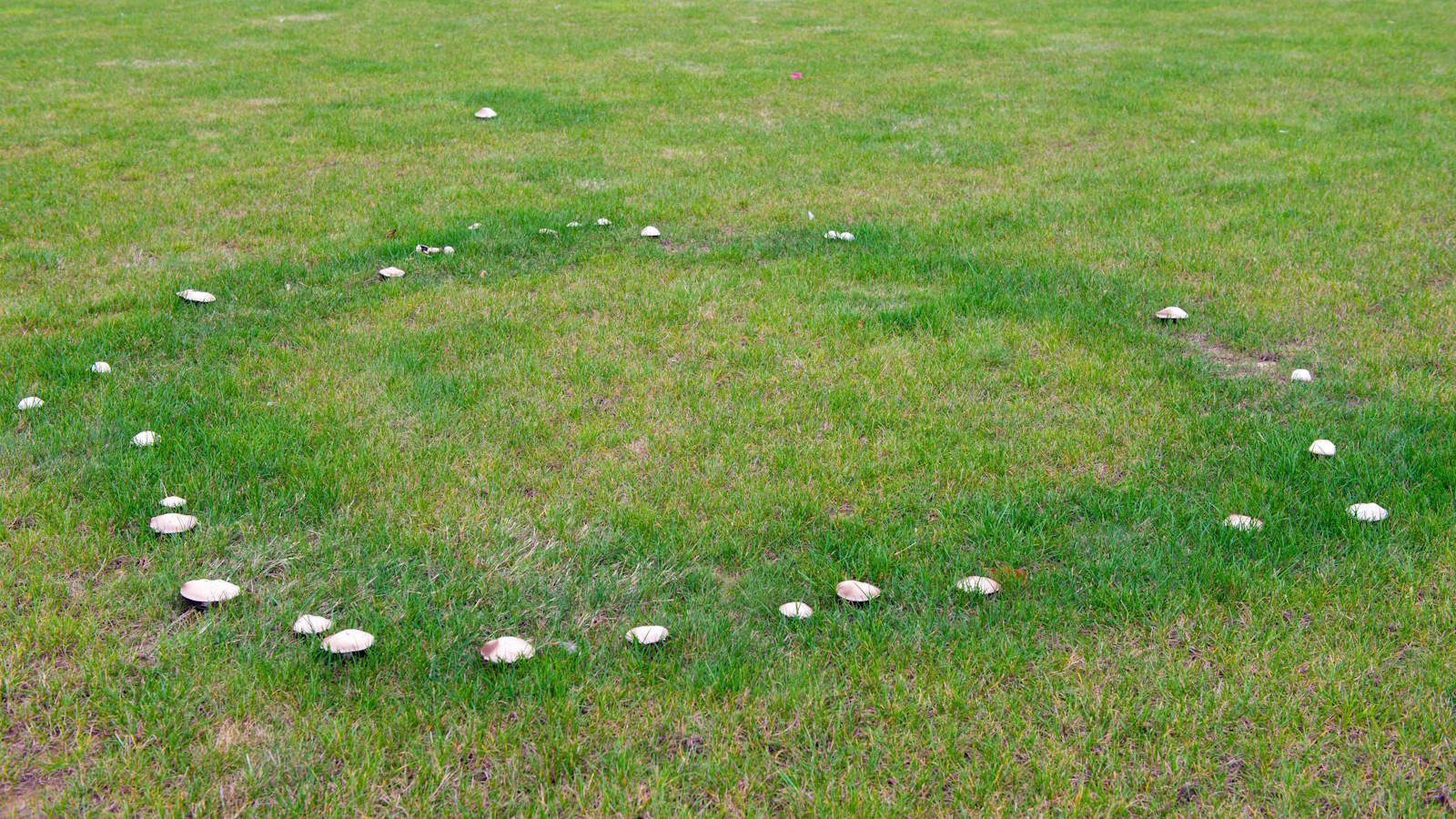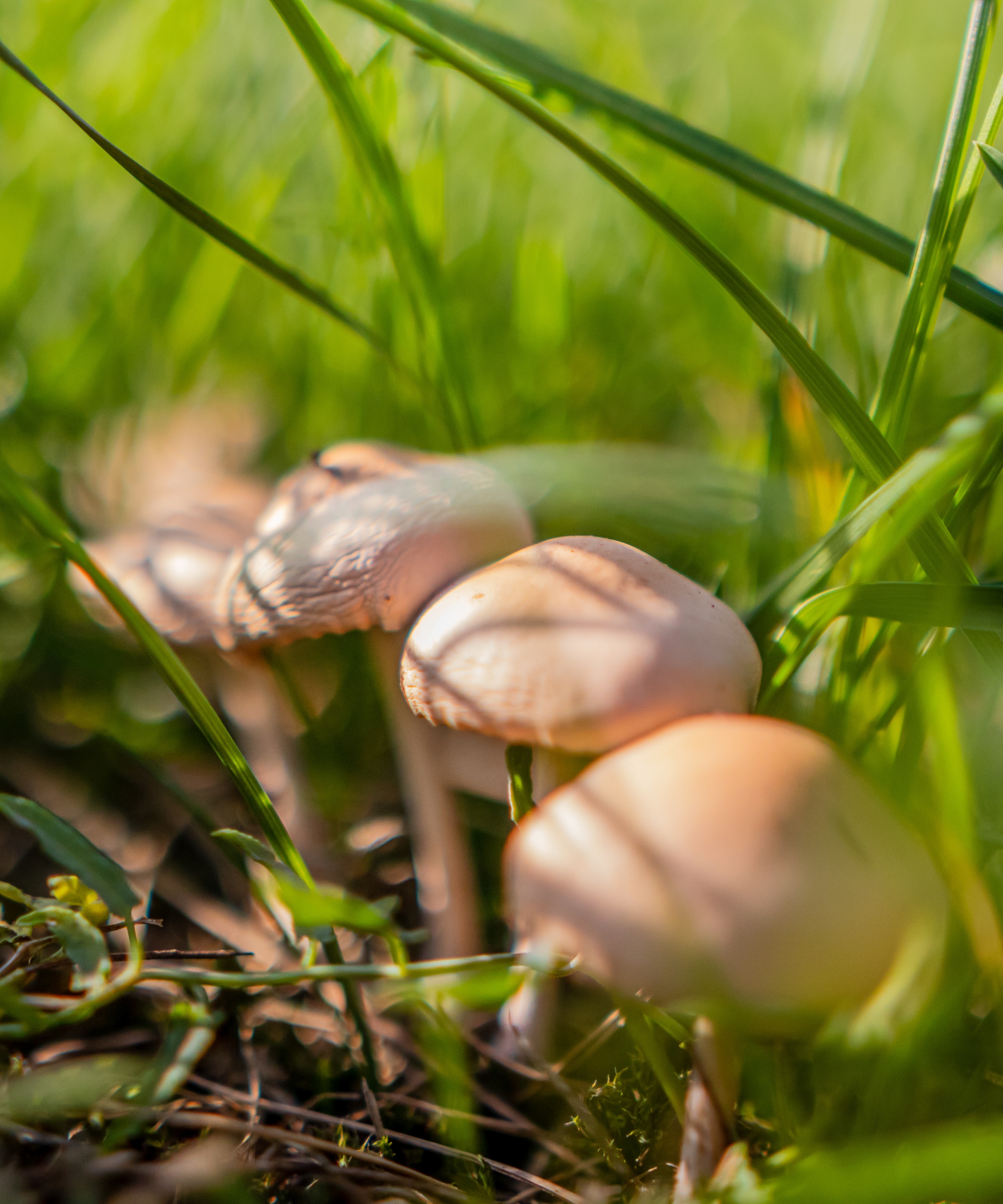
Fairy rings are a common sight in lawns and show as circular patches of growth that stand out from the rest of a pristine lawn. The sight of toadstools or fruiting fungal bodies is also commonplace.
The fungal issue can come in different forms and show different symptoms, ranging from dead patches of grass to turf growing better than the rest of a lawn. These different types of fairy rings pose varying levels of threats to the overall health of your lawn.
The good news is that not all fairy rings have terrible consequences for a backyard lawn and there are simple and proven ways to protect your grass from being affected. Common lawn care tasks to keep a lawn healthy are actually the best form of defence against the fungal problem.

What are fairy rings in lawns?
Fairy rings are distinctive circular patches in grass that will differ in color from the rest, and can be accompanied by the growth of mushrooms on a lawn. We hear from lawn care experts about what you should be keeping a lookout for and what can be done to stop fairy rings ruining your lawn.
What causes fairy rings in grass?

Fairy rings are caused by the growth of fungi in the soil that can thrive for many different reasons, including poor irrigation, a build-up of thatch, and also on old wooden matter under the surface. The latter may include old tree stumps that remain beneath your lawn.
Several types of fungi can cause fairy rings and may come to the fore at differing times of the year. Fairy rings can grow in all manner of grasses. The fungi knit together a network of threads underneath the surface that impacts how the lawn grows, and also put out their sprouting mushroom caps. The fungi does this by breaking down any dead or decaying plant material in the lawn.
While they can occur in a wide range of lawn types, grasses in sandy soil types are most highly at risk.
Ryan Farley, CEO of Lawnstarter, claims: ‘Lawns that are low in nutrients or that have a dense thatch layer tend to be especially susceptible to fairy rings - they tend to signal a lawn that needs some help.’
It is not just backyard lawns that can be subjected to fairy rings, all turf from areas of rough grass to pristine golf courses commonly succumb to the fungi that cause fairy rings.
Signs of lawn fairy rings

A fairy ring will show, as the name suggests, as a circular patterns on the lawn. Most commonly, it will be composed of lush and dark-green grass and can be accompanied by a ring of mushrooms.
The color of the ring, which will likely differ from the rest of the lawn, is caused by the fungi releasing nitrogen as it breaks down the dead or decaying material.
However, Jeremy Yamaguchi, the CEO of Lawn Love, warns that ‘fairy ring symptoms are not always the same’ and highlights there are three categories they can fall into.
- Type I: This type of fairy ring appears as a ring of wilted, brown, dead grass and is the most damaging to lawns. The soil and thatch are extremely dry and nearly waterproof.
- Type II: The ring is dark green and grows faster than the surrounding turf. The dark green grass is due to the release of nitrogen and other nutrients as the fungus breaks down organic matter.
- Type III: The disease appears as a ring of mushrooms or puffballs. These symptoms typically occur after periods of frequent or heavy rainfall.
The second type is the most regularly seen type in backyard gardens. The ring will continue to grow over time if no measures are taken to deal with it and is capable of spreading by up to 6-12 inches each year.
How to get rid of fairy rings in a lawn

A good lawn maintenance regime can help protect a lawn from developing fairy rings. As the fungi is more likely on a dry lawn that lacks in nutrients, then ensuring to regularly fertilize a lawn and water the lawn helps ensure the grass is healthy and that can keep fairy rings at bay,
Mark Marino from Lawn Phix says that, in particular, proper watering and irrigation is ‘the number one cultural control’ for fairy rings. He also advises: ‘Conduct routine soil tests, and maintain a well-balanced fertility and lawn care program by addressing any deficiencies in the grass.’
The lawn expert also recommends to ‘avoid thatch accumulation by dethatching and aeration’ during spring and fall to remove excess dead and decaying material in the thatch that the fungi can thrive on.
If you do spot the tell-tale signs of fairy rings, there are some simple measures you can take to combat the issue. This includes aerating the area with a garden fork to help water to penetrate deep down into the soil, as the fungal bodies do create a barrier.
‘Aerate the lawn and drench the soil with a wetting agent,’ says Jeremy Yamaguchi. ‘A wetting agent is a chemical solution that allows water to penetrate and spread in the soil. The wetting agent is important because the soil and thatch of Type I fairy rings are a nearly impervious (hydrophobic) layer that prevents water from permeating into the soil.’
Adding a high-nitrogen fertilizer can help the rest of the grass mirror the dark green patches around the fairy ring, however that is merely a cosmetic solution rather than dealing with the fairy ring itself. A similar cosmetic solution is to remove the toadstools by brushing, raking, or mowing them away. This eliminates the eyesore of the fungal growths, protects people and animals from potentially poisonous fungi, and also prevents the spores from spreading further.
While removing the surface mushrooms can reduce the visible signs on the surface, Matthew Koch, Director of Biotechnology, Genetics, Lawn Nutrition and Seed at Scotts, recommends that, after aerating and watering the affected area, a fungicide treatment should be ‘the last step to ensure these rings disappear, and stay gone’.
On smaller fairy rings, removing the turf and replacing it by laying fresh turf or soil, that you would overseed with fast growing grass seed, can be a practical remedy. However, to fully eradicate the fungi you would need to remove the soil to a depth of around one foot.
A fungicide that starts to work within 24 hours of application. The product can prevent disease before it appears and control disease at the first sign of symptoms
A blend of seaweed extract & 30% active wetting agent that can aid water penetration into the soil & hold moisture in the root zone
A wetting agent that can suspend moisture in soil, improve penetration, and reduce the channelling of water. It increases nutrient uptake and promotes a healthy soil profile.
FAQs
Is a fairy ring good for a lawn?
The first type of fairy ring is the most destructive to a lawn - where it appears as a ring of brown and dead grass. However, most people get the second type of fairy ring with a circle of brighter green grass that grows faster than the rest of the lawn. Such a fairy ring is not good for a lawn, but they are easier to deal with and less of a risk to the overall health of the lawn.
If you are left with any bare patches on a lawn, the best time to sow grass seed to replace them is in spring or fall. At these times of year, the soil is warm and moist and the grass seed will germinate quickly. Fresh grass seed is always best, but if you do store grass seed correctly then it can have a long life before going bad.



!["[T]he First and Fifth Amendments Require ICE to Provide Information About the Whereabouts of a Detained Person"](https://images.inkl.com/s3/publisher/cover/212/reason-cover.png?w=600)



